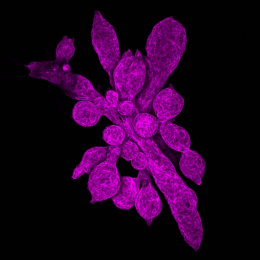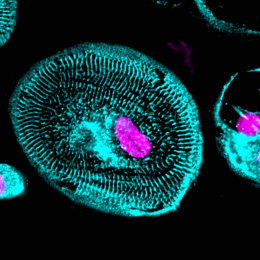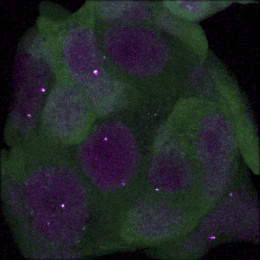Impressive Plasticity of A. pullulans in Cell Volume 3
Impressive Plasticity of A. pullulans in Cell Volume 3
Alison C. E. Wirshing
MIT Department of Biology
Here, networks of microtubules (cyan) form filaments that are organized into large bundles within cells of the fungus Aureobasidium pullulans. These bundles act as highways and direct the delivery and positioning of different organelles. This image was taken to understand how these highways direct the positioning of each nucleus (red), and important organelle that holds all the information for making a cell.
Here, networks of microtubules (cyan) form filaments that are organized into large bundles within cells of the fungus Aureobasidium pullulans. These bundles act as highways and direct the delivery and positioning of different organelles. This image was taken to understand how these highways direct the positioning of each nucleus (red), and important organelle that holds all the information for making a cell.
This polymorphic fungus is distinct from other yeast in that it produces multiple daughter cells in a single cell cycle. How A. pullulans partitions growth potentialand each organelle between multiple daughter cells is an open question that cannot be explained by known biology in conventional yeast models. To address this, I am quantifying cytoskeletal organization and organelle inheritance. By visualizing the cytoskeleton, I can ask how the cytoskeleton is oriented to direct organelle trafficking and by tagging different organelles I can track delivery of organelles into each daughter






